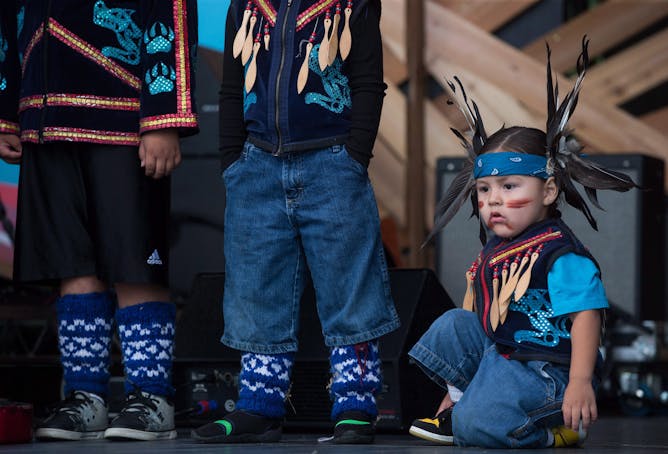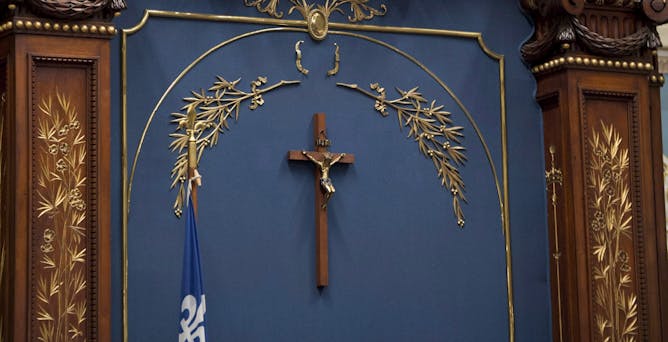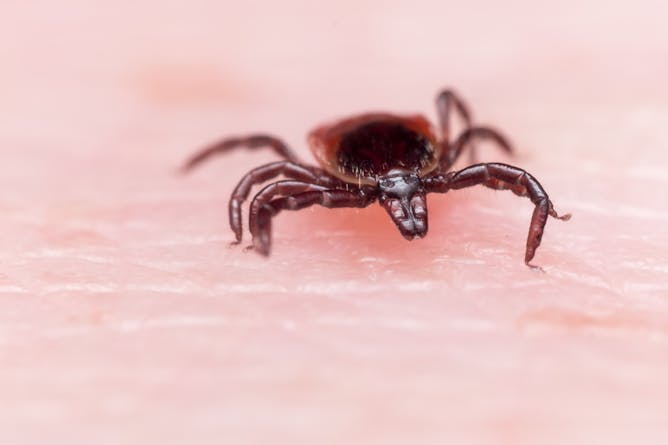|
Indigenous? Aboriginal? Native? Indian? Today in The Conversation Canada, Mathieu Landriault of the University of Ottawa examines the changing terms that Canadians have used when describing Indigenous People. Why have the terms changed? It could be Justin Trudeau's influence.
The new Quebec government has vowed to bring in legislation to prevent provincial civil servants from wearing religious dress or symbols. But Richard Moon of the University of Windsor points out the hypocrisy in this policy, given that a gold crucifix continues to hang in Quebec’s national assembly not as a religious symbol, but as a “heritage object.”
And finally…fall is the time of year that we all like to get out for hikes to enjoy the fresh air and changing colours. But Katie Clow of the University of Guelph says there’s something else we should be aware of when hitting the hiking trails – blacklegged ticks!
Regards,
|

A young Indigenous boy waits to dance after the Walk for Reconciliation in Vancouver in September 2017. The election of the Justin Trudeau government in 2015 seems to have fuelled a shift in how Indigenous people are described in the media.
THE CANADIAN PRESS/Darryl Dyck
Mathieu Landriault, University of Ottawa
The election of Justin Trudeau in 2015 has coincided with a shift in language in the media -- the term 'Aboriginal' has been increasingly replaced by the term 'Indigenous.' Here's why.
|

The crucifix is seen inside the the National Assembly in Québec in November 2013. The Québec government has been criticized for pushing for a niqab ban while defending the presence of the crucifix in the legislature.
THE CANADIAN PRESS/Jacques Boissinot
Richard Moon, University of Windsor
Québec is pushing to ban public servants from wearing religious garb even as the crucifix hangs in its legislature. It's ironic and hypocritical for a province that prides itself on secularism.
|

Expansion of the blacklegged and other tick populations across Canada over the last few years mean an increased risk of diseases like Lyme disease. It is wise to do a full body tick check on ourselves and our pets when we come in from the outdoors.
(Shutterstock)
Katie M. Clow, University of Guelph
Fall is peak activity time for adult blacklegged ticks, increasing the risk of tick bites on both people and pets.
|
Environment + Energy
|
-
Nancy Fresco, University of Alaska Fairbanks
For everyone from traditional hunters to the military, the National Park Service to the oil industry, climate change is the new reality in Alaska. Government, residents and businesses are all trying to adapt.
|
|
Health + Medicine
|
-
Glenda Gray, South African Medical Research Council
Introducing viral load testing at health facilities can help South Africa reach the United Nations target to end AIDS.
|
|
Science + Technology
|
-
Paul McGreevy, University of Sydney; Bethany Wilson, University of Sydney
Breeding dogs for certain colours can affect their health, behaviour and life-span.
|
|